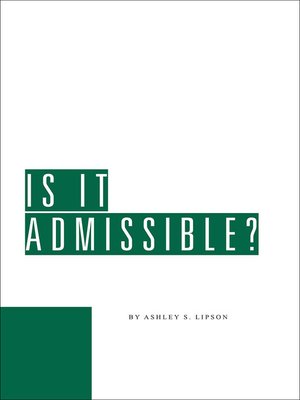
Sign up to save your library
With an OverDrive account, you can save your favorite libraries for at-a-glance information about availability. Find out more about OverDrive accounts.
Find this title in Libby, the library reading app by OverDrive.



Search for a digital library with this title
Title found at these libraries:
| Library Name | Distance |
|---|---|
| Loading... |
This update to Ashley Lipson's popular book will help you to quickly determine admissibility. In this revision, Lipson updates case law throughout and brings his incisive discussion of evidentiary matters to updates relating to:
- Argumentative questions – §1.400
- The best evidence rule – §2.600
- Declarations against interest exception/exemption to the hearsay rule – §5.403.1
- "Relevant" evidence – §6.800
- Ancient writings and "legal documents" – §25.202
- Pleadings – §25.209
- Leading questions – §7.400
- Waiver of the attorney-client privilege – §9.501.1
- Transcribed writings in relation to the best evidence rule – §20.200
- Laboratory reports in civil actions and criminal matters – §21.431
- Account applications- §22.405(c)
- Telephone logs and bills – §22.429
- Internet access records – §22.438
- Web postings and social media – §23.417
- Music lyrics – §23.418
- Witnesses' and parties' dress, grooming, and physical appearance, and jurors – §33.203
- Models as demonstrative evidence – §41.400
- Opposing maps, charts, graphs, and diagrams – §42.400
You continue to receive the following for each item of evidence discussed in the book:
- A quick explanation of the rule
- Strategies for admission and exclusion
- Pattern foundation questions
- Model objection language with responses
- State and federal statute and case citations
Don't overlook the book's dozens of novel arguments, proven strategies, memory aids, and successful shortcuts. Is It Admissible? reveals:
- The four foundation buzzwords for the four major types of evidence. Page O-2
- The 12 universally-recognized objections and when to use them. Page O-5
- A simple guide for maneuvering through the most common admissibility problems. Page O-8
- Discussion of the Federal Rules of Evidence and individual state applications regarding hearsay and hearsay exceptions. Chapter 5
- The 12 ways to oppose ordinary business records. Page 22-6
- For each of the 12 objections, model objection language, with potential responses. Appendix A







